In the era of accelerating climate change, the greatest question we face is how (and when) we decarbonize our energy systems. And while it has been greatly and disingenuously overplayed by the conventional energy industries and their apologists, the variable and intermittent nature of wind and solar does present a technical challenge.
Our understanding of this challenge and how we successfully integrate higher levels of these resources has grown substantially over the past few decades. And while many like Dr. Marc Z. Jacobson of Stanford are looking at 100% renewable energy scenarios, others have expressed concern that putting more than 80% wind and solar on grids in regions such as the United States will require costly levels of overbuild and energy storage (this of course is not a concern in areas that have adequate flexible hydroelectric generation, or can access it).
At last week’s Intersolar North America trade show, two presentations were put forward which show ways to get closer to 100% renewable energy in electricity, by both sophisticated use of energy storage and looking at changes beyond the electric sector.
95% wind and solar at 3.6 cents/kWh
As the first of these, Dr. Marc Perez of Clean Power Research gave the preview of a study which shows that Minnesota – a northern state with high seasonal solar variation and little hydro – can reach 95% wind and solar at a generation cost of 3.6 cents per kilowatt-hour (KWh). This is lower than current wholesale prices.
One of the keys here is the careful deployment of complementary levels of wind and solar, which has been demonstrated in Germany as important for balancing seasonal variability in both resources.
However, in this new study a team led by Dr. Perez brought out another important tool: oversizing of PV systems relative to storage capacity. In an analysis of matching supply and demand on an hourly basis over the course of a year, Dr. Perez showed how over-building solar relative to energy storage results in lower combined system costs, while creating a system that can provide power 24/7.
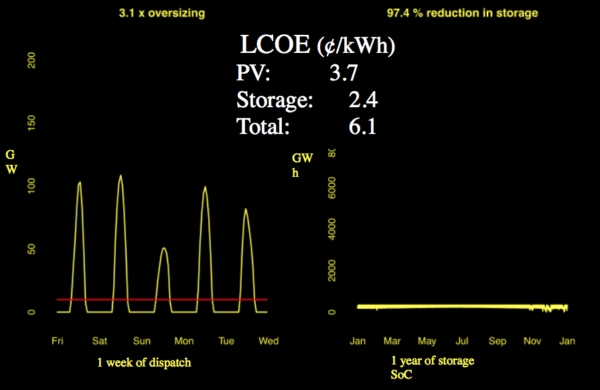
Of course, if you go too far, this results in too high of a cost for solar generation. Dr. Perez’s research shows a sweet spot of oversizing PV systems 3.1x relative to energy storage capacity, which falls to around 2x when a portfolio of solar and wind is considered. These would be DC-coupled storage systems, as this shows the greatest promise for shifting output to hours of higher demand relative to generation.
Using optimal combinations of wind, solar and storage, Dr. Perez was able to get to a levelized cost of energy of only 5.3 cents per kilowatt-hour (kWh) in 2050, and if 5% gas is added to the mix, the cost falls to 3.6 cents/kWh, due to less oversizing.
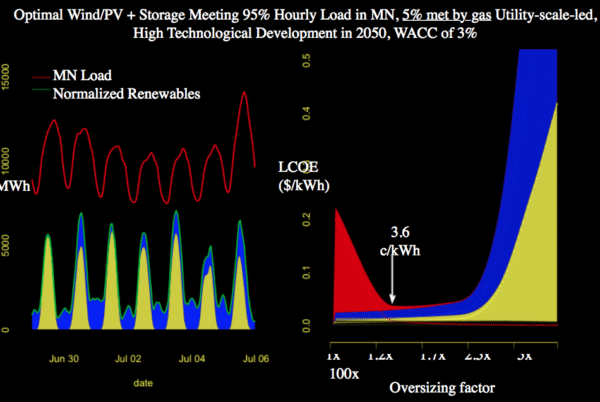
Of course, the cost calculations include a number of assumptions, including PV cost of 1.2 cents per KWh and a working cost of capital of 3%. However, Dr. Perez has clarified that this comes from projections made by the U.S. Department of Energy’s National Renewable Energy Laboratories (NREL). Additionally, we at pv magazine have reported on a number of contracts being signed at less than 3 cents per kilowatt hour for projects scheduled to go online the early 2020s.
And there are also assumptions that make this study conservative. Dr. Perez and his team modeled Minnesota as a closed system, meaning no electricity imports and exports. Increasing interconnections to import and export electricity at key times has long been identified as one of the lowest-cost tools to integrate higher levels of wind and solar, so if anything this 95% solar, wind and batteries should be easier and cheaper than this study suggests.
Beyond electricity
The second presentation by Dr. Sarah Kurtz, formerly of NREL and now University of California at Merced, showed no such flashy top-line numbers, but was more qualitative. Dr. Kurtz emphasized using the mutually reinforcing benefits of not only higher levels of low-cost wind and solar and a more flexible grid, but also the electrification other sectors including transportation, heating and cooling, as well as chemical production.
By using price signals, Dr. Sarah Kurtz argues that we can shift the timing of energy demand in these sectors, and along with electrification make greater use of wind and solar generation during the hours that these are abundant. This in turn allows us to put on more wind and solar, reinforcing opportunities for electrification.
However, she also notes that progress to date has been mixed. Solar and wind deployment has been strong, but EV adoption is not yet widespread, nor is deployment of batteries or implementation of time-of-use rates. Electrolysis to produce hydrogen is even further behind.
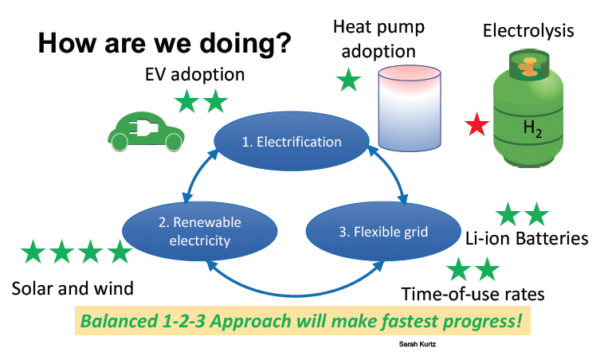
100% renewable energy is still a long ways off, with only that nations that host ample hydro (Costa Rica, Uruguay, Norway) or geothermal power (Iceland) getting above 60% renewables in electricity to date. In other nations it will not be as easy, and such research must inform policymakers and regulators so that we carefully plan deployment of resources to optimize costs and maximize results, with the end goal of achieving a future of cheap, abundant, clean renewable power.
Update: This article was updated on July 16 to 4:17 PM EST to include clarifications on the assumptions made by Dr. Perez and his team.
This content is protected by copyright and may not be reused. If you want to cooperate with us and would like to reuse some of our content, please contact: editors@pv-magazine.com.
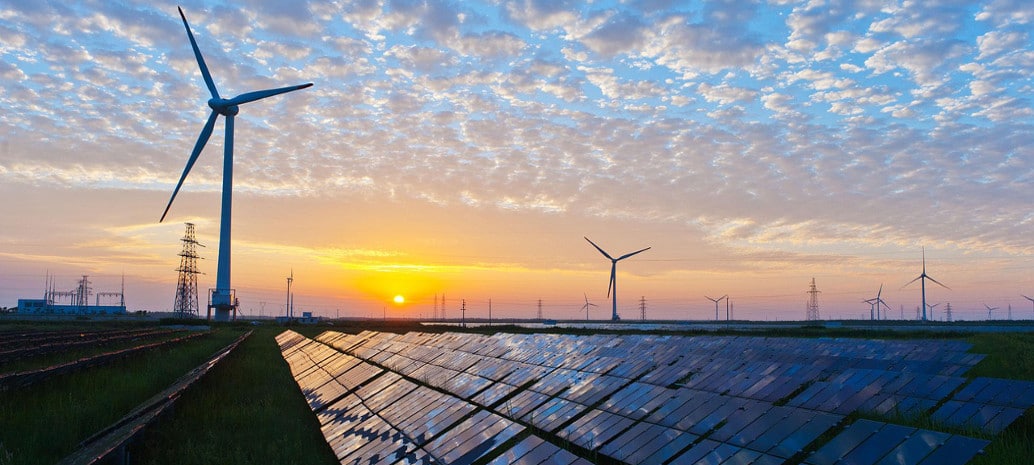







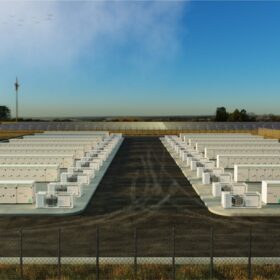
In the 95% one that can easily be supplied by RE fuels from bio, waste, synfuels.
By 2035 almost all needed fuels will be locally made.
EV’s only the last 3 yrs have had low enough battery costs to compete with and now solidly beat ICEs.
As V2G becomes the norm in EVs they will quickly become the largest battery storage supply.
And it’ll become the norm as it costs little extra and helps pay for the EV, even making a profit buying, selling power putting their rarely used 200 mile pack to use.
And data in they actually last longer when used more, charged fast.
Panels are dropping to $.20/wt putting in more panels than
needed, some at different angles to cut the duck, increase output cheaply.
Fact is I just don’t see much need for the grid in 20 yrs as so much cheaper for most home, building, etc, just make their own energy for less.
Take Virtual Powerplants. Just how hard would it be to turn them into utilities?
What I see PV manufactures doing is making solar systems in a box, not just panels , getting the whole value chain.
It is a wide open world now in energy with costs dropping.